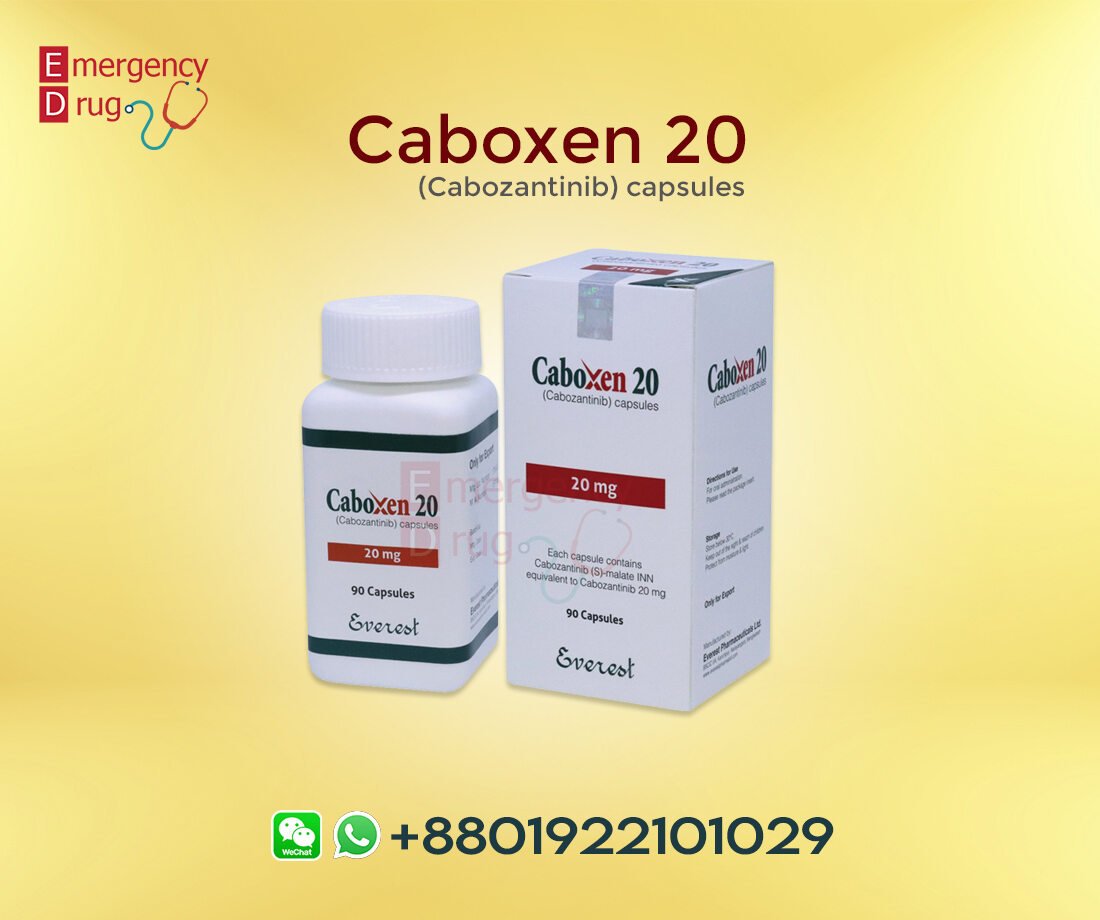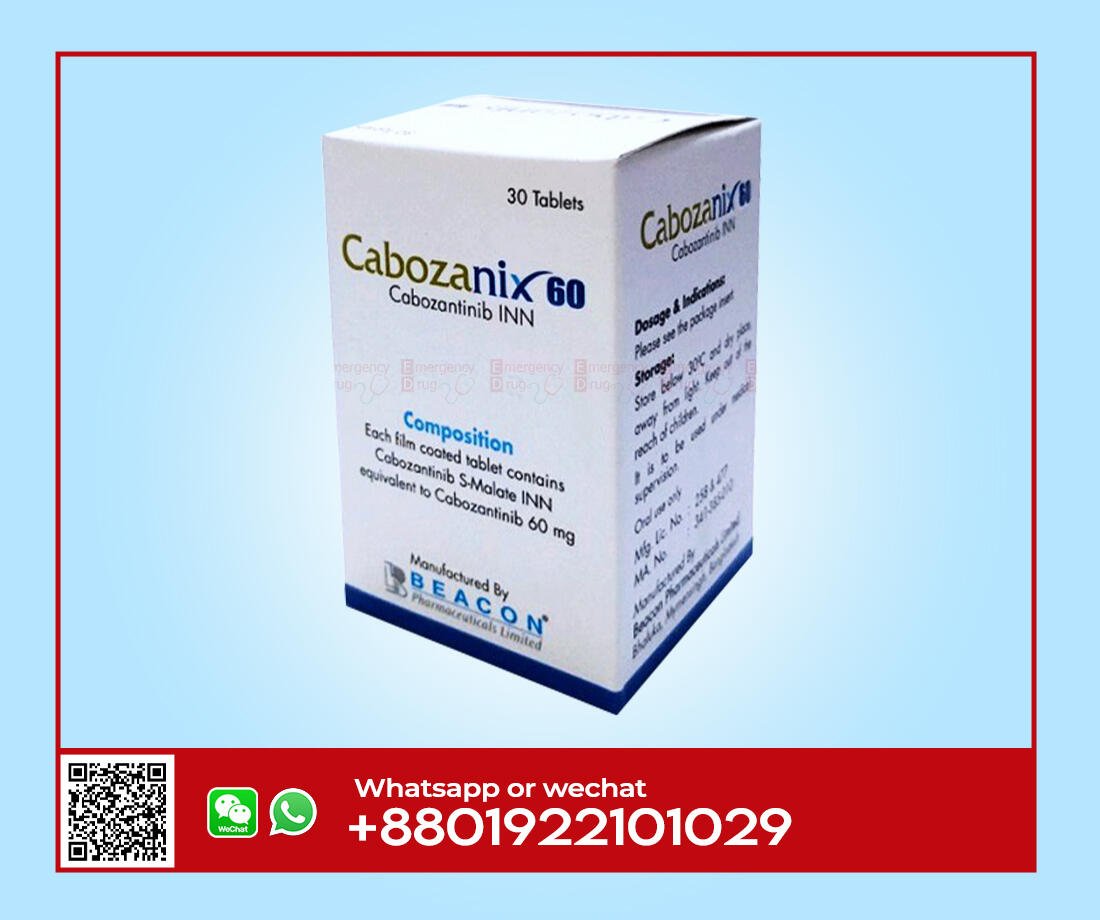Description
Sunitinib Capsule
Composition
Sunitix Capsule & 25 Capsule: Each capsule contains Sunitinib Malate INN equivalent to Sunitinib 50 mg & Sunitinib 25 mg.
Sunitix 12.5 Capsule: Each capsule contains Sunitinib Malate INN equivalent to Sunitinib 12.5 mg.
Product Features
| Product Name | : | Sunitix |
| Generic Name | : | Sunitinib |
| Formulation | : | Capsule |
| Available Pack Size | : | 28’s Pot |
| Available Strength | : | 12.5, 25 & 50 mg |
| Registrations | : | Export Only |
Dosage and Administration
GIST and RCC: 50 mg orally once daily, with or without food, 4 weeks on treatment followed by 2 weeks off.
pNET: 37.5 mg orally once daily, with or without food, continuously without a scheduled off-treatment period.
Dose Modification: Dose interruptions and/or dose adjustments of 12.5 mg recommended based on individual safety and tolerability.
Mechanism of Action
Sunitinib is a medicine that stops cancer from growing and spreading by blocking certain key molecules involved in these processes. It targets two important proteins called vascular endothelial growth factor receptor (VEGFR) and platelet-derived growth factor receptor (PDGFR), which are found in many types of solid tumors. These proteins are crucial for a process called angiogenesis, where tumors develop blood vessels to get the oxygen and nutrients they need to grow. Sunitinib also blocks other proteins like KIT, FLT3, and RET, which are important for tumor growth.
Side Effects/Adverse Effects
The most common adverse reactions (>_20%) are fatigue, asthenia, fever, diarrhea, nausea, mucositis/stomatitis, vomiting, dyspepsia, abdominal pain, constipation, hypertension, peripheral edema, rash, hand-foot syndrome, skin discoloration, dry skin, hair color changes, altered taste, headache, back pain, arthralgia, extremity pain, cough, dyspnea, anorexia and bleeding.
Precautions
Here’s a simplified breakdown of important safety considerations when using sunitinib:
Hepatotoxicity: Monitor liver function tests before starting treatment, during each cycle, and as needed clinically. Consider interruption or discontinuation for severe adverse liver events.
Cardiac Toxicity: Watch for signs of heart failure and monitor left ventricular function, especially since declines and failures have occurred.
QT Interval Prolongation: Be cautious in patients at risk for QT prolongation. Consider monitoring with electrocardiograms and electrolytes during treatment.
Hypertension: Monitor blood pressure and manage as necessary.
Hemorrhagic Events: Watch for tumor-related bleeding and monitor blood counts and physical status.
Osteonecrosis of the Jaw: Consider preventive dental care before treatment and avoid invasive dental procedures, especially in patients receiving intravenous bisphosphonate therapy.
Tumor Lysis Syndrome (TLS): Monitor closely, especially in patients with high tumor burden.
Thyroid Dysfunction: Be aware of signs and symptoms and monitor thyroid function as needed.
Temporary Interruption for Surgery: Consider pausing treatment for major surgical procedures.
Adrenal Function: Monitor during times of stress, such as surgery, trauma, or severe infection, due to observed adrenal hemorrhage in animal studies.
Use in Specific Populations
Pregnancy Category D
Sunitinib can harm a developing fetus if taken during pregnancy. Since it interferes with angiogenesis, a crucial process in fetal development, it can lead to pregnancy complications. Studies on pregnant rats and rabbits showed that sunitinib caused birth defects, fetal death, and other problems. Pregnant women should avoid taking sunitinib, and those who are capable of getting pregnant should use contraception during treatment. In animal studies, high doses of sunitinib led to skeletal abnormalities in rat fetuses and cleft lip and palate in rabbit fetuses. Maternal weight gain was affected at certain doses in rats, but there was no direct reproductive harm observed. However, reduced body weights were noted in rat offspring at higher doses.
Nursing Mother
For nursing mothers, it’s important to note that Sunitinib and its byproducts are found in rat milk. In studies, lactating rats given 15 mg/kg of sunitinib showed significant levels of the drug and its metabolites in their milk, much higher than in their blood plasma, up to 12 times more. However, it’s uncertain if sunitinib or its main active metabolite are present in human breast milk. Since many drugs do pass into human milk and because of the potential harm to nursing infants from sunitinib, a decision should be made whether to continue nursing while taking this drug, considering both the importance of the medication to the mother and the potential risks to the infant.
Pediatric Use
Sunitinib capsule hasn’t been proven safe or effective for use in pediatric patients. Studies with cynomolgus monkeys and developing rats, bone abnormalities were observed when given doses exceeding certain levels. In monkeys, physeal dysplasia (abnormal growth plate development) occurred at doses over 0.4 times the recommended daily dose (RDD).
In rats, bone thickening and increased risk of tibia fracture were seen at doses over 10 times the RDD, along with tooth decay at higher doses. These effects were reversible upon stopping treatment, except for tooth problems. For monkeys, a continuous 3-month treatment didn’t establish a safe level, but intermittent treatment over 8 cycles showed a safe level at 1.5 mg/kg/day. In rats, a safe level for bone effects was found to be less than or equal to 2 mg/kg/day.
Geriatric Use
Out of 825 patients with gastrointestinal stromal tumors (GIST) and renal cell carcinoma (RCC) who participated in clinical studies with sunitinib, 34% were 65 years old and above. In a Phase 3 study focusing on pancreatic neuroendocrine tumors (pNET), 27% of patients who received sunitinib were 65 years old and above. Interestingly, no significant differences were noted in terms of safety or effectiveness between younger and older patients in these studies.
Hepatic Impairment
When administering sunitinib capsule to patients with mild or moderate hepatic impairment (Child-Pugh Class A or B), no adjustment to the starting dose is necessary. Sunitinib and its main metabolite are mostly broken down by the liver. After a single dose, patients with mild or moderate hepatic impairment showed similar levels of the drug in their system compared to those with normal liver function. However, sunitinib hasn’t been studied in patients with severe hepatic impairment (Child-Pugh Class C). Additionally, cancer patient studies have typically excluded individuals with high levels of liver enzymes (ALT or AST) in their blood.
Renal Impairment
When giving Sunitinib capsule to patients with mild, moderate, or severe kidney impairment, no changes to the initial dose are needed. Any adjustments to the dose should be made depending on how well the patient tolerates the medication and their safety profile. For patients with end-stage renal disease (ESRD) who are undergoing hemodialysis, no initial dose adjustment is necessary. However, in comparison to individuals with normal kidney function, those with ESRD undergoing hemodialysis experience a 47% decrease in sunitinib exposure.
Presentation & Packing
Sunitix Capsule 12.5 & 25 & 50 mg: Each commercial box contains 28 Capsules in a bottle.









Miraz –
I have taken this medicine quite a long time and they provide it at a reasonable price.